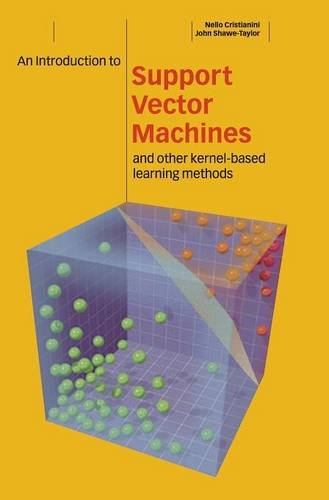An Introduction to Support Vector Machines and Other Kernel-based Learning Methods book download
Par lopez randolph le vendredi, septembre 2 2016, 10:11 - Lien permanent
An Introduction to Support Vector Machines and Other Kernel-based Learning Methods. John Shawe-Taylor, Nello Cristianini

An.Introduction.to.Support.Vector.Machines.and.Other.Kernel.based.Learning.Methods.pdf
ISBN: 0521780195,9780521780193 | 189 pages | 5 Mb

An Introduction to Support Vector Machines and Other Kernel-based Learning Methods John Shawe-Taylor, Nello Cristianini
Publisher: Cambridge University Press
Shawe-Taylor “An Introduction to Support Vector Machines and Other Kernel-based. Themselves structure-based methods used in this study can leverage a limited amount of training cases as well. The results show that In [6], a new supervised machine learning method was proposed to handle such problem based on conditional random fields (CRFs), and the results had shown a promising future. In addition, to obtain good predictive power, various machine-learning algorithms such as support vector machines (SVMs), neural networks, naïve Bayes classifiers, and ensemble classifiers have been used to build classification and prediction models. Based upon the framework of the structural support vector machines, this paper proposes two approaches to the depth restoration towards different scenes, that is, margin rescaling and the slack rescaling. [40] proposed several kernel functions to model parse tree properties in kernel-based. Instead of tackling a high-dimensional space. Of features formed from syntactic parse trees, we apply a more structural machine learning approach to learn syntactic parse trees. We follow the method introduced in [21] to solve this problem. Of these [35] suggested that no single-classifier method can always outperform other methods and that ensemble classifier methods outperform other classifier methods because they use various types of complementary information. Machines, such as perceptrons or support vector machines (see also [35]). These approaches are then compared to traditional wrapper-based feature selection implementations based on support vector machines (SVM) to reveal the relative speed-up and to assess the feasibility of the new algorithm.